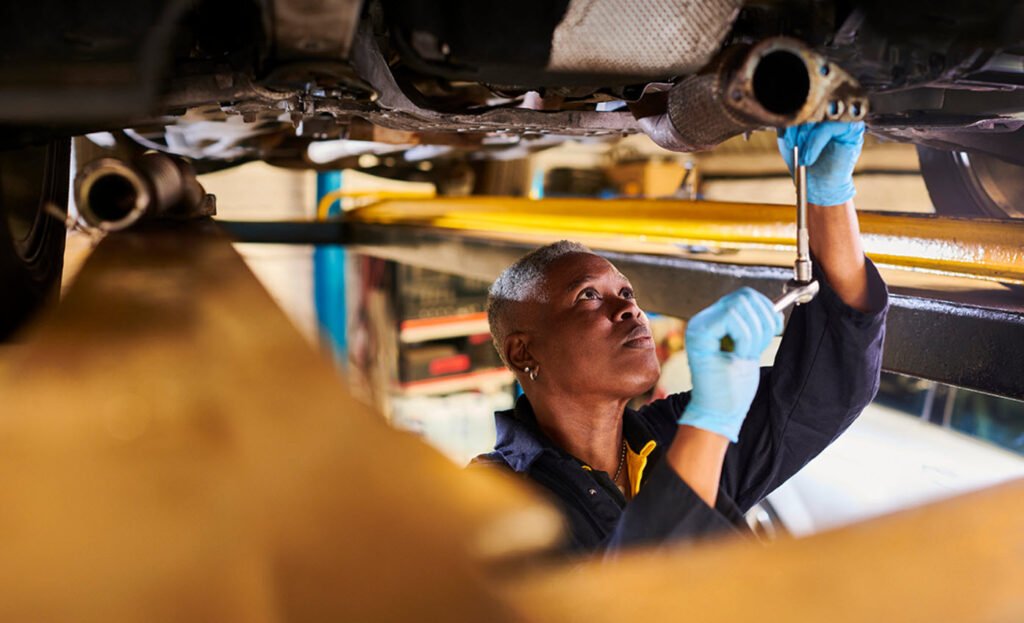
Car repairs are an inevitable part of owning a vehicle, and they can often come with a hefty price tag. However, with the right approach and some savvy decision-making, you can minimize your expenses and save money on car repairs.
Whether you’re dealing with routine maintenance or unexpected repairs, there are several strategies you can employ to keep your costs in check.
In this guide, we’ll explore practical tips and techniques to help you save on car repairs without compromising on the quality of service.
1. Research and Choose a Reliable Mechanic:
One of the most critical decisions you’ll make when it comes to car repairs is selecting a trustworthy mechanic or repair shop. Take the time to research local mechanics and read reviews from other customers.
Look for a mechanic with a solid reputation for honesty, reliability, and expertise. By choosing a reputable mechanic, you can ensure that your car is in good hands and avoid unnecessary expenses resulting from subpar workmanship.
2. Identify Necessary Repairs:
Before taking your car to the mechanic, make a list of all the repairs that need to be addressed. Be specific about the issues you’ve noticed, such as strange noises, warning lights, or performance problems.
Providing clear information to your mechanic will help them diagnose the problem more accurately and prevent unnecessary repairs that can drive up costs.
3. Shop Around for Quotes:
Don’t hesitate to shop around and compare quotes from multiple repair shops before committing to a service. Different shops may offer varying prices for the same repair, so it’s worth exploring your options.
Be sure to inquire about the cost of parts, labor rates, and any additional fees upfront. By obtaining quotes from several sources, you can make an informed decision and choose the most cost-effective option.
4. Get Estimates in Writing:
To avoid any misunderstandings or surprise charges, always request written estimates from your chosen repair shop before authorizing any work. Make sure the estimate includes a detailed breakdown of the costs, including parts and labor. Having a written estimate ensures transparency and helps you budget for the repairs accordingly.
If the final cost exceeds the estimate, you’ll have documentation to reference and discuss with the repair shop.
5. Consider Used or Rebuilt Parts:
If your car requires replacement parts, consider opting for used or rebuilt parts instead of brand new ones. Used parts from reputable salvage yards or certified dealerships can be significantly cheaper than new parts and offer comparable quality.
Similarly, rebuilt parts that have been refurbished to meet manufacturer specifications can be a cost-effective alternative. Discuss these options with your mechanic to determine the best choice for your repair needs.
6. Learn Basic Maintenance Tasks:
Empower yourself by learning basic car maintenance tasks that you can perform yourself. Simple tasks like changing the oil, replacing air filters, and checking fluid levels can be done at home with the right tools and guidance.
By handling these tasks yourself, you can save on labor costs and ensure that your car receives regular upkeep without breaking the bank. Invest in a reliable car maintenance manual or consult online resources to learn essential maintenance procedures.
7. Inquire About Warranties:
Before authorizing any repairs, inquire about warranties or guarantees offered by the repair shop. Many reputable repair shops stand behind their workmanship and offer warranties on parts and labor.
A warranty provides added peace of mind and ensures that you won’t have to pay for the same repair twice if issues arise shortly after the service. Be sure to understand the terms and conditions of the warranty to take full advantage of its benefits.
Conclusion
Saving money on car repairs doesn’t have to be a daunting task. By following these practical tips and strategies, you can minimize your expenses and make informed decisions when it comes to maintaining and repairing your vehicle.
From choosing a reliable mechanic to exploring cost-effective repair options, there are plenty of ways to keep your car in top condition without breaking the bank.
With a proactive approach and a willingness to learn, you can become a savvy and cost-conscious car owner while ensuring the longevity and performance of your vehicle.








